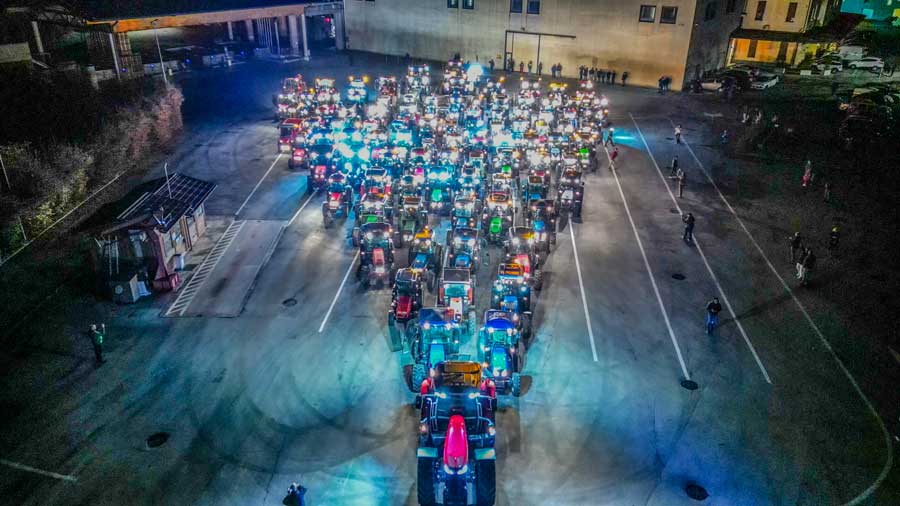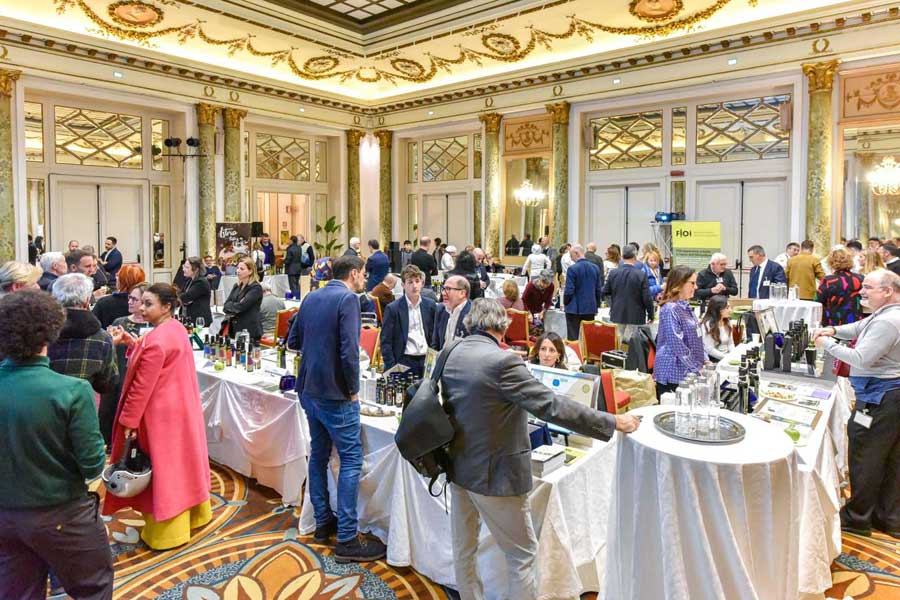News on Italian wine and oenology.
Italian Wineries
BiancaVigna in the Wine Spectator Top 100
The 2023 Brut Conegliano Valdobbiadene Prosecco Superiore has ranked 61st in the prestigious American ranking. For Elena Moschetta, it’s “like receiving an Oscar.” A rare achievement for a Prosecco and unique for the Veneto region this year.
Count Collalto: a thousand years of history and a future that’s still relevant today.
From the 958 parchment to the modern winemaking processes introduced in 1904 by Count Ottaviano Antonio. A family tradition that has shaped the evolution of Prosecco.
Valpolicella Negrar Winery: The Roots of Amarone
From the legend of the forgotten Recioto to archival evidence: the first bottle of “Amarone Extra” appeared in 1939, kept today in the cellar vault.
The Tedeschi family: Valpolicella told in Florence
A history dating back to 1630, and a winemaking process that focuses on separate vinification and a rigorous study of the hillside vineyards.
Cantine Brugnano joins Assovini Sicilia
The Partinico winery joins the association of over one hundred wineries on the island. Shared priorities: sustainability, biodiversity, generational transitions, exports, and wine culture.
Siddùra awarded Ecofriendly 2026
The Gallura winery receives the prestigious Vinibuoni d’Italia award: only six Italian companies were selected for their strong environmental commitment.
Villa Gianna Winery: Wine & Gospel to Celebrate the Founder
An emotional event, featuring music, art, and award-winning wines, in the large “La Tinaia” hall on the occasion of Giovanni Giannini’s birthday.
Terre del Barolo: a roundabout dedicated to “the hands that work the vineyards”
A symbolic work depicts hands of different colors: a message of integration and gratitude towards the international workforce that supports viticulture in the Langhe.
Cantina Falluto launches the Christmas Contest
A social initiative with prizes dedicated to the local food and wine experience: dinner, tastings, and wine selections.
Italian Wine & Oenology
Arneis on the Rise: The Roero Resurgence
In Bra, demand is growing and winemakers are starting a soil mapping to further enhance the identity and quality of native wines.
Collio: Resilience after tariffs and floods
Despite the 15% US tariffs and the damage from the November 17 flood, sales of Collio white wines remain stable. A sign of the region’s strength.
“Microbes to the Rescue” Project: Stronger Vines and Fewer Diseases
The University of Udine team wins the National Innovation Award with a microbiological solution that reduces mortality and disease in young vines.
Concours Mondial Bruxelles: Centinaio’s criticisms
The Vice President of the Senate denounces the “illogical” use of regional public funds earmarked for organizing local stages of the wine competition.
EU Wine Package: Provisional Agreement
European Parliament and Council define measures to strengthen competitiveness, climate resilience, innovation, wine tourism, and simplification of labels.
International
World Bulk Wine Exhibition 2025
The bulk wine segment shows stable values and rising average prices, despite declining volumes. It remains one of the most sensitive indicators of global movements.
Artisanal bag-in-box: the Sfusobuono case
The Piedmontese project redefines quality bulk wine: identity, craftsmanship, and a model born during the pandemic that is now attracting new consumers.
Wine and the Big Screen: Brunello Starring on Netflix
In the Jay Kelly film starring George Clooney, a party in Tuscany becomes an iconic scene in the American imagination of Italian wine.
8 Questions – 8 Answers About Wine (Germany)
A window into the tastes of German consumers: ripe Rieslings, aromatic summer whites, and local wine shops transformed into places of culture and conviviality.
Wine Events & Wine Tourism
Italy ranks first in luxury tourism
ENIT President Alessandra Priante explains why our country is a world leader in high-end travel: authenticity, artisanal care, and unique experiences.
Let’s take notes – Usini
The 24th edition of the traveling event celebrating local wines, authentic hospitality, and the traditions of northern Sardinia kicks off on December 13th.
Alto Adige Wine Road: New Board of Directors
Christian Gschnell is president, Stephan Konder and Stephan Calliari are vice presidents. The association is strengthening its leading role in regional wine tourism.
Presentation of the book “The Molecule of Civilization” by Francesco Sorelli
On December 12th in Pontassieve, the author retraces wine as a symbol of eight millennia of culture, myth, and beauty.
In Memoriam
Farewell to Luigi Cataldi Madonna
A unique figure, a philosophy professor turned to viticulture, a free and lucid voice on the transformations of Abruzzo and Italian agriculture.
Thanks for reading. Today’s wine press review is brought to you by WINEIDEA.IT . See you tomorrow for a new journey into the world of wine.




